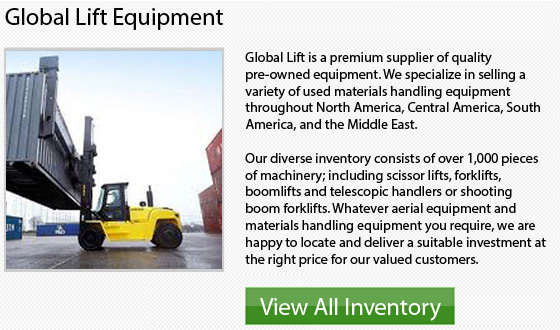
Sideloaders have become a great choice for lots of companies needing to perform handling jobs on unconventional loads. Sales of these models are small though, taking up 1% to 5% of the global forklift market.
Commonly, side-loaders are used within the timber, aluminum, glass, steel, aviation and construction businesses. Moreover, they are used within industries which are making unconventional items like for example windmill arms and moldings. Basically any business which produces awkward or oversized long things utilizes the side-loaders.
Side-loaders were originally designed in the start of the 1950s by Henry Le Grande Lull from the Lull Manufacturing Company. These models were designed in response to a request from the United States Air Force. The original concept was patented for commercial application but it was not made until Lull Manufacturing was taken over in the year 1959 by the Baker Raulang Company. It was Baker Raulang who made the design. Afterward, the name was changed to Baker Traveloader. In the latter part of the 1950s, the side-loaders were introduced to Europe. The beginning models were designed by Italian manufacturer Fiora and the afterwards B-P Battioni e Pagani who pioneered the machine's use in timber yards.
Side-loaders vary a little from counterbalance, forward-traveling forklifts in that they have their forks located on the side of the equipment. The operator drives the equipment sitting inside a cabin like a traditional lift truck. The lifting, loading, and unloading functions are done by the mast situated at the right-hand side of the driver. The cargo is usually transported lying on a metal or wooden deck. This helps to reduce stress, distortion and damage to the cargo. Recent innovations to the side-loader design have integrated a huge range of lifting accessories being developed.
A few of the benefits of utilizing side-loaders over reach-stackers or conventional lift trucks consist of: safer operating conditions, enhanced visibility, and faster traveling speeds as well as the ability to use available space more efficiently.
Only once you evaluate your work environment and kinds of applications you would be putting your equipment through, would you be able to precisely determine the best type of equipment to complete your tasks. There are several good rental choices available too in order to determine the right type of equipment to meet your requirements. Doing some research on the Internet or talking to a reputable dealer is another great way to get some information as well when trying to know the right option.